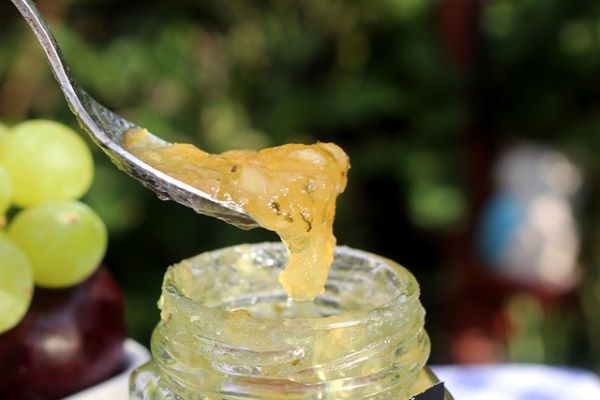Preservatives play a crucial role in the food industry by preventing spoilage, extending shelf life, and maintaining the safety of processed foods. Benzoic Acid (E210) is a commonly used food preservative with antimicrobial properties, effectively inhibiting the growth of bacteria, yeast, and mold in various food and beverage products. Despite its widespread use, concerns have been raised regarding its safety and potential health effects. This article aims to provide a comprehensive understanding of Benzoic Acid, including its definition, sources, applications, associated risks, regulatory status, and strategies for minimizing exposure. (Source)
What is the Food Preservative Benzoic Acid E210?
Benzoic Acid (E210) is a naturally occurring compound found in many fruits and vegetables, including berries, apples, and cranberries. It is also produced synthetically for use as a food additive. Benzoic Acid is a white, crystalline solid with antimicrobial properties, making it effective in inhibiting the growth of microorganisms in food and beverage products. (Source)
What are the Sources of Benzoic Acid E210?
Benzoic Acid is naturally present in certain fruits and vegetables, particularly those with high acid content. However, the majority of Benzoic Acid used in the food industry is manufactured synthetically through chemical processes. It is commonly produced by the reaction of toluene with oxygen or by the oxidation of benzyl chloride. (Source)
What is the List of Foods Containing Benzoic Acid E210:
Benzoic Acid (E210) is used as a preservative in various processed foods and beverages, including:
- Soft drinks and fruit-flavored beverages
- Fruit juices and concentrates
- Salad dressings and condiments
- Jams, jellies, and preserves
- Pickles and relishes
- Sauces and spreads
- Bakery products
These products often undergo acidic conditions or have high water activity, making them susceptible to microbial spoilage, which Benzoic Acid helps prevent.
Why is food Preservative– Benzoic Acid E210 Used in the Food Industry? What are the Applications
Benzoic Acid (E210) serves several functions in the food industry, including:
- Preservation: Benzoic Acid inhibits the growth of bacteria, yeast, and mold, thereby preventing spoilage and extending the shelf life of processed foods and beverages. (Source)
- pH Adjustment: Benzoic Acid is often used in combination with other preservatives to achieve the desired pH level in acidic food and beverage products, enhancing its effectiveness as a preservative. (Source)
- Flavor Enhancement: In addition to its preservative properties, Benzoic Acid may enhance the flavor of certain foods and beverages, contributing to their overall sensory appeal.
The Dangers and Harmful side effects of Benzoic Acid E210 on Human Health are:
While Benzoic Acid is generally recognized as safe (GRAS) by regulatory agencies when consumed within recommended levels, some individuals may experience adverse reactions, including:
- Allergic Reactions: In rare cases, Benzoic Acid may cause allergic reactions in sensitive individuals, manifesting as skin rash, itching, hives, swelling, or respiratory symptoms. (Source)
- Asthma and Respiratory Issues: Some individuals, particularly those with pre-existing respiratory conditions like asthma, may experience exacerbation of symptoms upon exposure to high levels of Benzoic Acid, leading to respiratory discomfort or difficulty breathing.
- Potential Carcinogenicity: Although Benzoic Acid itself is not considered carcinogenic, its salts and esters, such as sodium benzoate, may form benzene, a known carcinogen, under certain conditions. Benzene formation can occur when Benzoic Acid is combined with ascorbic acid (vitamin C) or citric acid in acidic environments or exposed to heat and light. (Source)
What are the FDA regulations for food Preservative– Benzoic Acid E210?
The U.S. Food and Drug Administration (FDA) regulates the use of Benzoic Acid (E210) as a food additive and sets strict guidelines for its use in processed foods and beverages. The FDA permits the use of Benzoic Acid in specific concentrations deemed safe for human consumption to ensure its effectiveness as a preservative while minimizing potential health risks. (Source)
How to Minimize the Exposure to Food Preservative– Benzoic Acid E210?
To minimize potential risks associated with Benzoic Acid (E210) consumption, consider the following recommendations:
- Read Labels: Check food labels carefully for the presence of Benzoic Acid or its derivatives, particularly if you have sensitivities or allergies to food additives.
- Moderation: Consume processed foods and beverages containing Benzoic Acid in moderation as part of a balanced diet, and opt for fresh, unprocessed alternatives whenever possible.
- Avoid High-Heat Cooking: Benzoic Acid may break down and form benzene under high-heat conditions or when exposed to acidic environments. Therefore, avoid high-temperature cooking methods for foods containing Benzoic Acid to minimize the risk of benzene formation.
In conclusion, Benzoic Acid (E210) is a widely used food preservative that helps maintain the safety and quality of processed foods and beverages. While it is generally considered safe for consumption, concerns remain about its potential health effects, particularly in sensitive individuals or under certain conditions that may promote benzene formation. By understanding its sources, applications, associated risks, and regulatory considerations, consumers can make informed choices to promote their health and well-being.

Also, read: Know All about Cured Meat Preservative Sodium Nitrite E250
Sources and References:
- U.S. Food and Drug Administration (FDA)
- European Food Safety Authority (EFSA)
- National Institutes of Health (NIH)
- World Health Organization (WHO)
- Food and Agriculture Organization of the United Nations (FAO)
- Scientific journals and peer-reviewed research articles.





